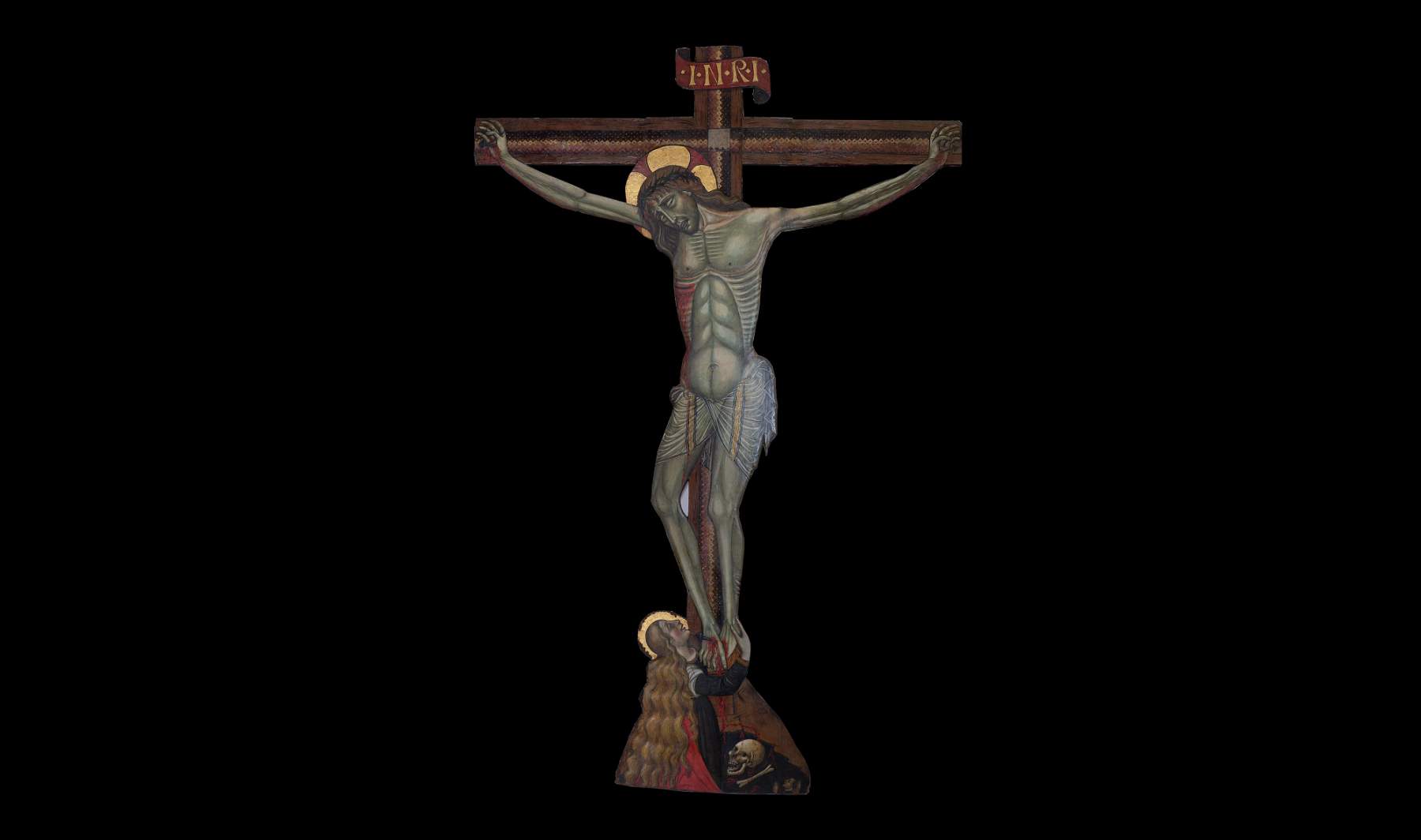Important crucifix by Giovanni da Gaeta from 1460 restored
Restoration work on the Crucifix by Giovanni da Gaeta (active in the mid-15th century) kept at the Diocesan Museum and Religiousness of the Parco dei Monti Aurunci in Gaeta (Latina), conducted at theCentral Institute for Restoration at the Scuola di Alta Formazione in Matera, has been completed. The restored work will be exhibited from March 27 to July 10, 2022 in Forli, at the Museo di San Domenico, as part of the exhibition Magdalene. The Mystery and the Image.
Giovanni da Gaeta’s Crucifix is one of the most important works in the area. The cross, shaped and painted on the recto and verso, dated around 1460, depicts Christ Crucified with Magdalene at the foot of the Cross and is executed in tempera and gold on panel. The subject falls fully within the typology of the gothic-painful crucifix: it is a fourteenth-century iconography, focused on the more dramatic and pathetic components of the episode partly due to the in-depth study of the theme within apocryphal texts and sacred theatrical representations, which was still widespread in the mid-fifteenth century. The author of the work was identified by Federico Zeri as the “master of 1456,” who was responsible for the triptych with theCoronation of the Virgin executed on that date and at that time preserved in the Gaetan church of Santa Lucia (formerly Santa Maria in Pensulis), the same house of worship from which the painted cross comes. Both works became part of the collections of the Diocesan Museum of Gaeta. Subsequently, the anonymous painter identified by Federico Zeri was identified as Giovanni da Gaeta, an artist from the Neapolitan-Aragonese milieu, trained in contact with Leonardo da Besozzo in the building site of the church of San Giovanni a Carbonara, and whose language was later enriched by Umbro-Marchigiano and Hispano-Catalan experiences.
The restoration work conducted by the Central Institute for Restoration, in collaboration with the Soprintendenza Archeologia Belle Arti e Paesaggio for the provinces of Frosinone and Latina, involved both the recto and verso of the cross; it was carried out largely as part of a didactic worksite by the students of the School of Higher Education and Study of the Matera branch of the 70th and 72nd courses afferent to the Professional Training Path related to Painted Artifacts on Wood and Textile Support. Wood carved artifacts. Wooden furniture and structures. Manufatti in synthetic materials worked, assembled and/or painted, and was completed by restorer Paola Minoja. Specifically, the work carried out by ICR involved the restoration of pictorial surfaces and structural consolidation works. Prior to the intervention, multispectral infrared and ultraviolet surveys were carried out, and some sampling was done for stratigraphic investigations to recognize pigments and binders.
The cleaning proved time-consuming and complex because of the heavy brown layer present all over the surface, which obtunded the brilliance of the original colors. The verso of the painting, a monochrome executed in lean tempera, was decohered and ragged. In this case, the cleaning was done basically dry. The paint film was consolidated and retouched exclusively in watercolor. The restoration was completed thanks to the collaboration of the Fondazione Cassa dei Risparmi di Forlì, which financed the completion of the pictorial reintegration and the construction of a new support system.
 |
| Important crucifix by Giovanni da Gaeta from 1460 restored |
Warning: the translation into English of the original Italian article was created using automatic tools. We undertake to review all articles, but we do not guarantee the total absence of inaccuracies in the translation due to the program. You can find the original by clicking on the ITA button. If you find any mistake,please contact us.



























